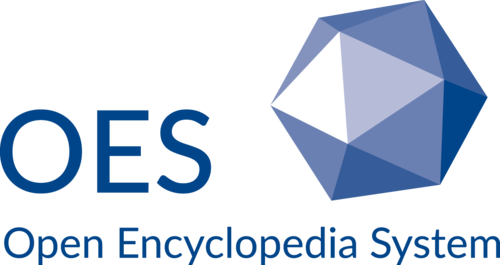OES Demo application
You can experience the frontend including a list of OES features in an exemplary application here: https://demo.open-encyclopedia-system.org/. The application includes a basic online encyclopedia and a basic frontend. To get more information about the exemplary application, how to access the backend and how to create your own online encyclopaedia see https://demo.open-encyclopedia-system.org/about-oes-demo/. You can download the application sources via GitHub following the instructions on Interested in OES?.
WordPress Configuration & OES Enhancement
- OES is a WordPress plugin, it uses and enhances WordPress features and functionalities.
- Publish citable articles
- Include DOI registration and keywording for articles and other entities
- Edit and administrate relations between entities
- Configure settings inside the editorial layer
-
Administrate user, posts, entities, access rights and role models
- Assign and administrate roles and capabilities
- Include or exclude OES features by configuration inside the editorial layer
- Enable multiple language support inside the editorial layer
WordPress Theme (Frontend Design)
OES can be used in combination with any standard or customised WordPress theme that includes custom post types. We recommend creating a project specific theme. A WordPress theme allows responsive design and full text search. OES includes furthermore the integration of a solr database and advanced search options.
ACF Usage & Enhancement
OES depends on the ACF plugin for creating forms and fields inside the editorial layer. It enhances ACF with custom field types and field data processing including data transformation.
OES Advanced Content Management
OES offers a wide range of content management tool:
- Include and administrate versioning for entities
- Connect articles or other entities to bibliographic entries
- Use keywords for articles or other entities to build an index
- Edit keywords and administrate settings inside the editorial layer
- Include meta data like files, images and licences
- Use a rich-text editor to edit articles or other entities
- Use and administrate multi level taxonomies
- Import entities from csv files
- Export entities into csv or json files
- Use the Zotero API with bidirectional synchronisation
- Search automatically for GND numbers
OES Participation
OES offers participation for users in- and outside the editorial layer:
- Configure submission workflows like "Call For Papers" to interact with authors outside of the editorial layer
- Use an extended role model for sharing content, engagement and user member area
- Provide an individual reading list for each user
- Enable user comments and upload forms on your website
- Integrate blogs and social media
OES Workflow Management
OES offers the design and configuration of individual editorial workflows.
- Customise individual workflows for editorial staff, editors, authors, referees and translators
- Use online submission inside the editorial layer
- Configure and customise a peer review process including number of reviewers, form configuration and workflow phases
- Include community participation in editorial workflows
OES Interfaces
OES offers the implementation of APIs to common library catalogues and external resources like Europeana, Cendari.
OES Publication
Export articles or other entities as pdf.
Further OES Features
- Generate reports to published articles and workflow status.
- Generate user statistics.
